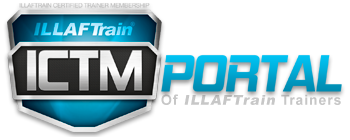Certified Coach
Course id: TOCO
Duration: 6 Days
introduction
Coaching is a branch of knowledge and a practice that is an essential competence for any education professional. Coaching creates an appropriate environment for innate talents to stand out, for goals to be accomplished, and for visions to be realized. This happens no matter what the case is, whether an external coach helping a manager to improve his own skills, an internal coach directing a supervisor to more participatory style, or a director using coaching tools to achieve organizational strategy.
Professional trainers, learners and developers must rely on an increasingly complex set of skills. In case your job requires you to provide “coaching” to individuals, groups, teams and organizations, this training is a great assistance. This program aims to present needed practical techniques, not only to provide coaching to clients effectively, but also to measure and follow up on the progress. At the end of this training you will be able to return to your workplace and apply your own coaching tools.
Prerequisites
No
Audience
This program is for trainers and educational & training consultants who participant in designing and provide training for customers, whether external or internal.
Objectives
At the end of this training program you will be able to:
- Recognize Coaching and its benefits
- Know the importance of applying Coaching in organizations
- Recognize the 4 steps Coaching Map
- Recognize the important qualities for Coaching Dialogue
- Determine Coaching levels
- Realize how Coaching is important for your work and organization
- Recognize the differences between Dialogue and Discussion
- Engage in dialogue using Comprehensive Listening
- Discover 4 Steps model to support Coaching Discussions
- Use Dialogue Tools for context and framing
- Build and ask powerful question to discover the client’s thinking
- Use direct speech to support the client
- Recognize how credibility is important
- Recognize & follow Moral Guidelines
- Understand & support issues related to confidentiality
- Determine Primary and intended Coaching Discussion
- Present Coaching presence
- Evaluate Client Readiness
- Build necessary Rapport for Coaching
- Use Reflecting Feelings technique
- Use Speech Encouragers
- Prepare clients for Coaching
- Conclude Official and Unofficial Coaching Agreements
- Recognize Data Collection Sources and Methods
- Determine Data Collection Standards
- Use several Data Collections Tools
- Discover Data Collection Obstacles
- Organize and Sort Data
- Help the client to Identify current & future situation
- Help the client to set measurable goals
- Help the client to set up field assignments
- Help the client who is stuck
- Deal with client resistance
- Plan and apply Coaching Discussion
- Recognize what you should do through dealing with resistance and challenges
- Choose appropriate tools to Monitor Progress
- Invite others to Coaching
- Determine Lucrative Strategies
- Support the clients to use new Tools and Techniques
- Celebrate achieving goals
- Work successfully with internal and external Coaches
- Discover Coaching levels and its evaluating methods
- Develop evaluating measuring plan
- Apply Evaluating Learning Checklist
- Determine “Lessons learned”
- Deal with Challenging Coaching Scenarios
- Plan and conduct a final speech
- End the Coaching Process
Content
Fundamentals
Coaching in the workplace
Encouraging a Culture Applying Coaching
Where is Coaching in the System?
Coaching Map in 4 Steps & Activities for each step
Coaching Definitions, Roles & Dimensions
Elements of Intentional Coaching
How to Create a Coaching Plan for Self-Development?
Planning & Implementing a Coaching Program
Communicating Effectively
What Supports Effective Communication?
What is Dialogue?
Coaching Model in 4 Steps
Listening
Self-Evaluation for Listening
How to build Strong Questions?
How to create Support Dialogue?
8 Dialogue Tools for Context and Framing
4 Dialogue Tools for Paving the Way
Discovering Real-Time Data
Connect with the Client
15 guidelines for building credibility
What are the ethics of coaching
How to attend coaching and its goal
The appropriate relationship between the coach and client
Discover how to assess readiness
Use a Tool to Predict Organizational Change Readiness
How to Develop and Sustain Rapport
8 Guidelines for Reflecting Feeling Skills
4 Guidelines to Use Encouragers in best way
5 Guidelines to Observe Behaviors
How to draft Coaching Agreements
Assemble Plans
7 Data Collection Standards
Why Data Collection is Important?
Data Collection & Analysis
How to Evaluate Coaching Needs?
7 Data Collection Sources and Methods
Most Important Data Collection Methods in a Comprehensive Table
How to choose the Best Method to Collect Data?
12 Important Data Collection Obstacles
How to Sort Data?
How to Design & Take Actions?
The Coach as a Guide
Creating Full Work-Plan
Creating Tasks/ Work Materials
Coach as a Motivator
Use Process-Steps Worksheet
Coach as a Teacher
Continue and Support Progression
How to Help the Client who is Stuck?
Discovering Barriers & Strategies to help the Client who is Stuck
How to Deal with Resistance?
Signs of Discomfort & Resistance
8 Guidelines for Dealing with Resistance and Challenges
How to Monitor Client Progress?
Three Tools to Track the Progress
How to Extract Lucrative Strategies?
Importance of Achieving Goals Celebration
Have Results Shared
How to Measure Coaching Results?
5 Steps to Measure the Return on Investment
Discovering Coaching Levels Evaluation and Methods
How to Develop Measuring Plan?
How to Evaluate Coaching Provision Services?
Apply Self-Evaluating
5 Steps to Measure the Return on Investment
Sample Study about Calculating Return on Investment
What is the Continuous Improvement Process?
How to create “Lessons Learned” Work-Sheet
Applying Final Conversation Check List
Challenging Coaching Case Studies & Scenarios
Coach as a Monitor
Upcoming Events
| 2025-05-17 | Register |

